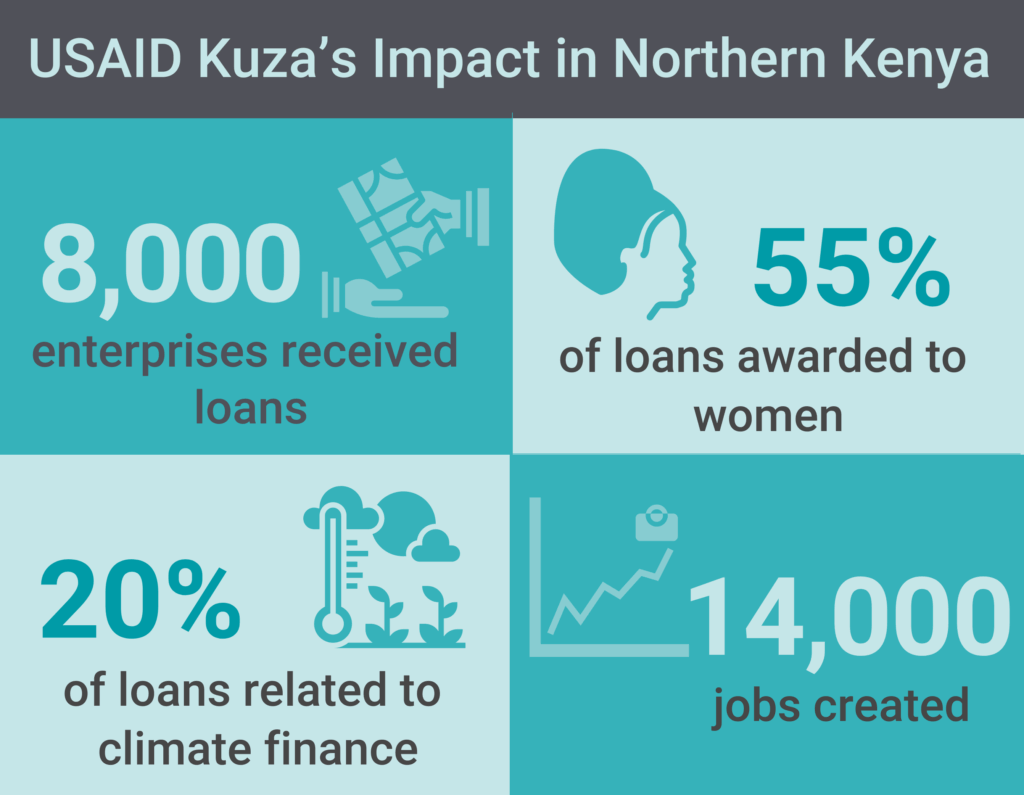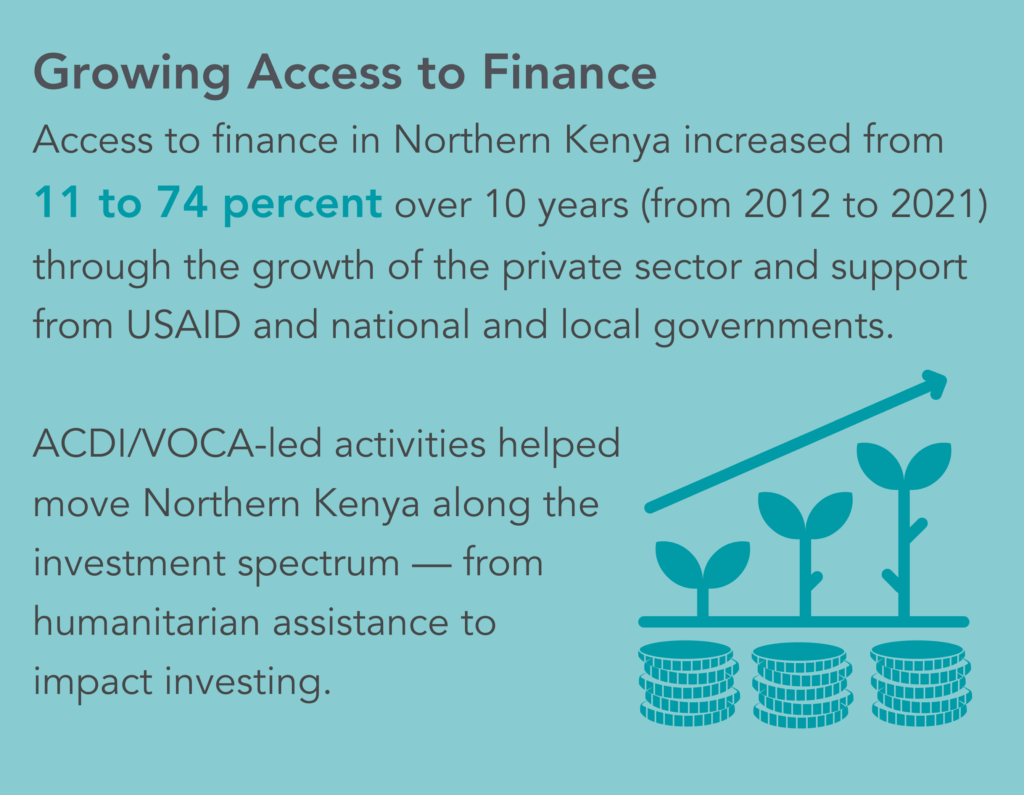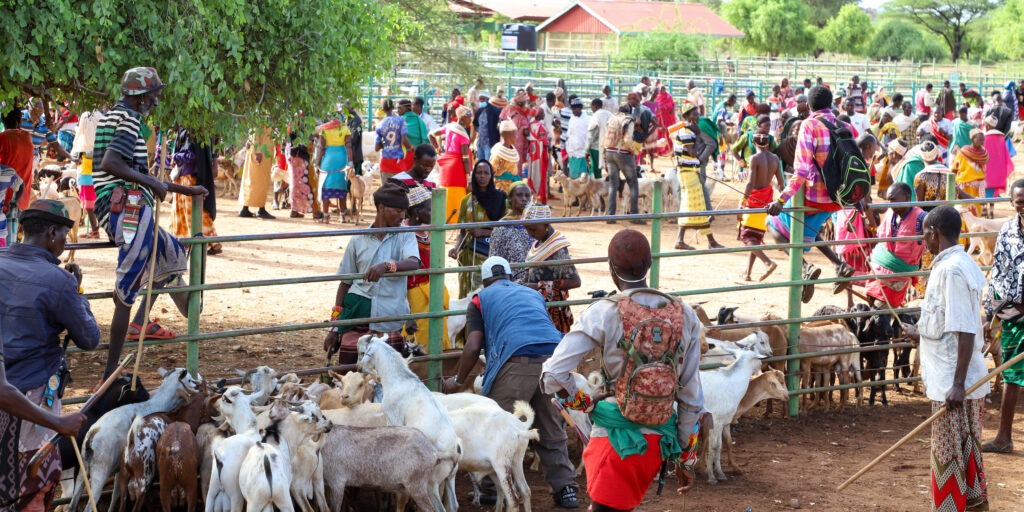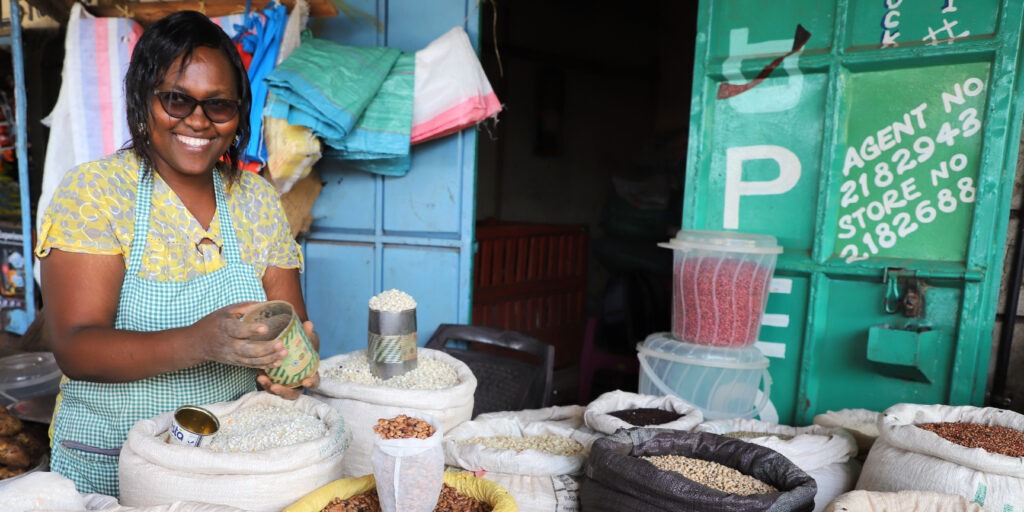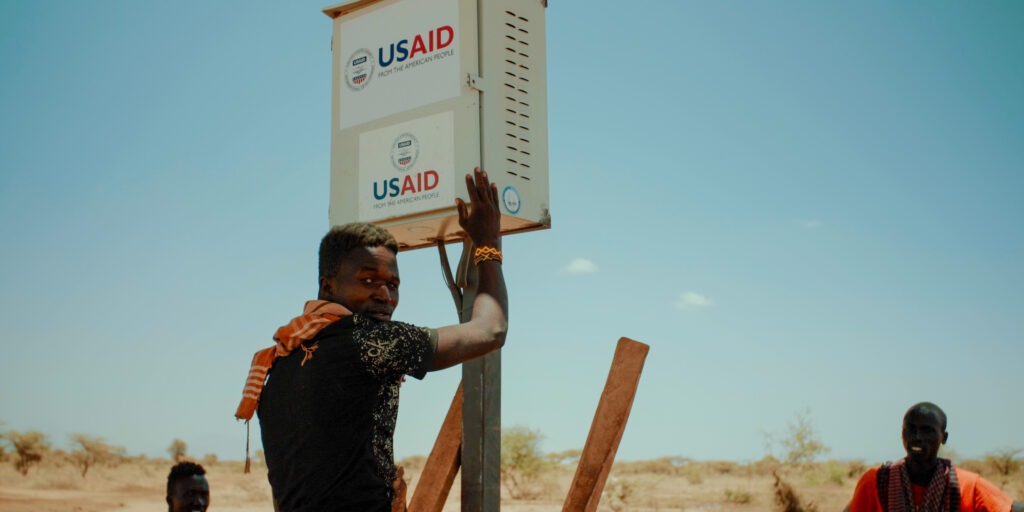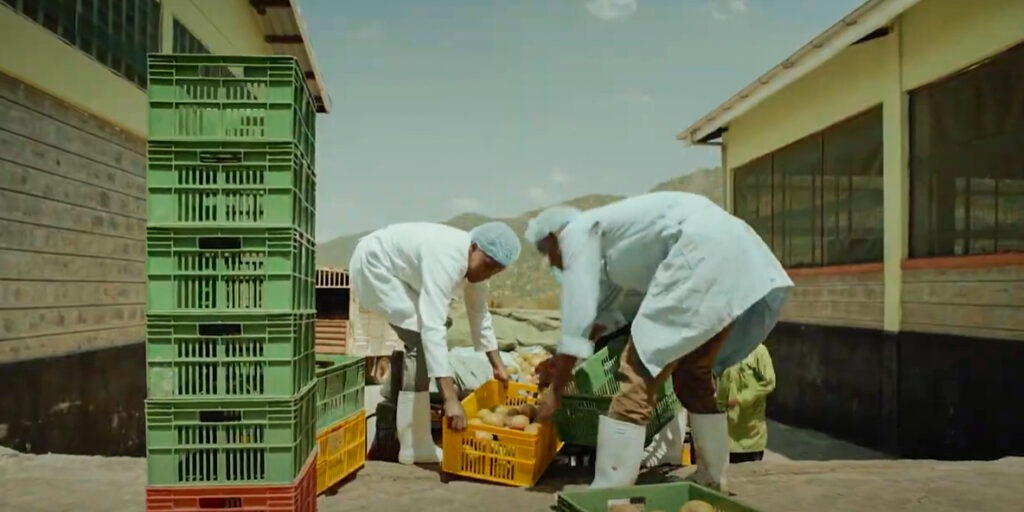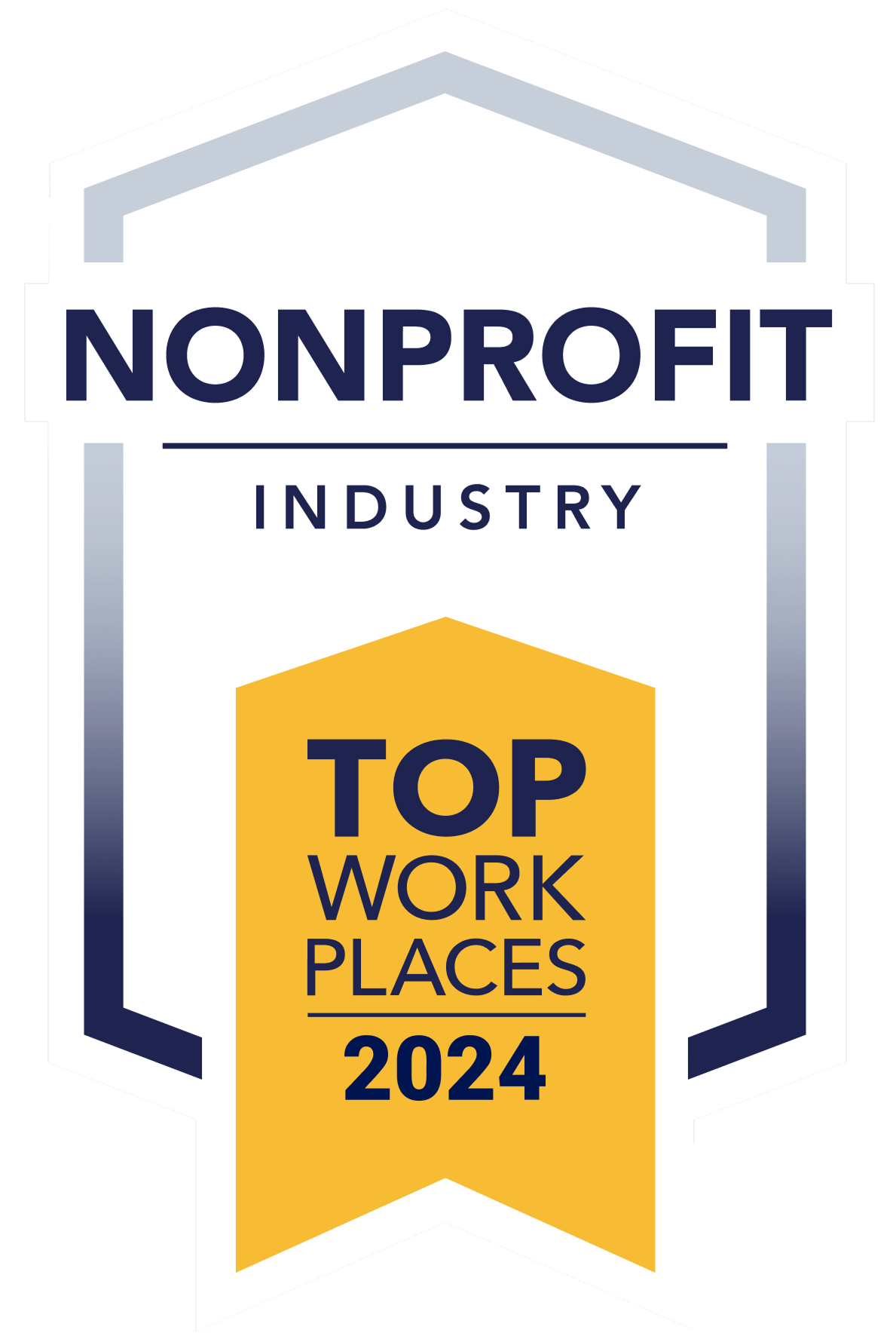Our programs in Kenya have played a vital role in driving economic growth, especially in the country’s most remote and vulnerable regions. By improving access to essential services, fostering collaboration, and attracting investment, we help communities build resilience and thrive. From empowering farmers and livestock traders to supporting communities in adapting to extreme weather and conflict, our initiatives have delivered measurable, lasting results. These include higher incomes, improved nutrition, greater food security, increased employment opportunities, and a reduced risk of violent extremism. Working hand in hand with local partners, we have helped transform entire communities across Kenya.
Our History in Kenya
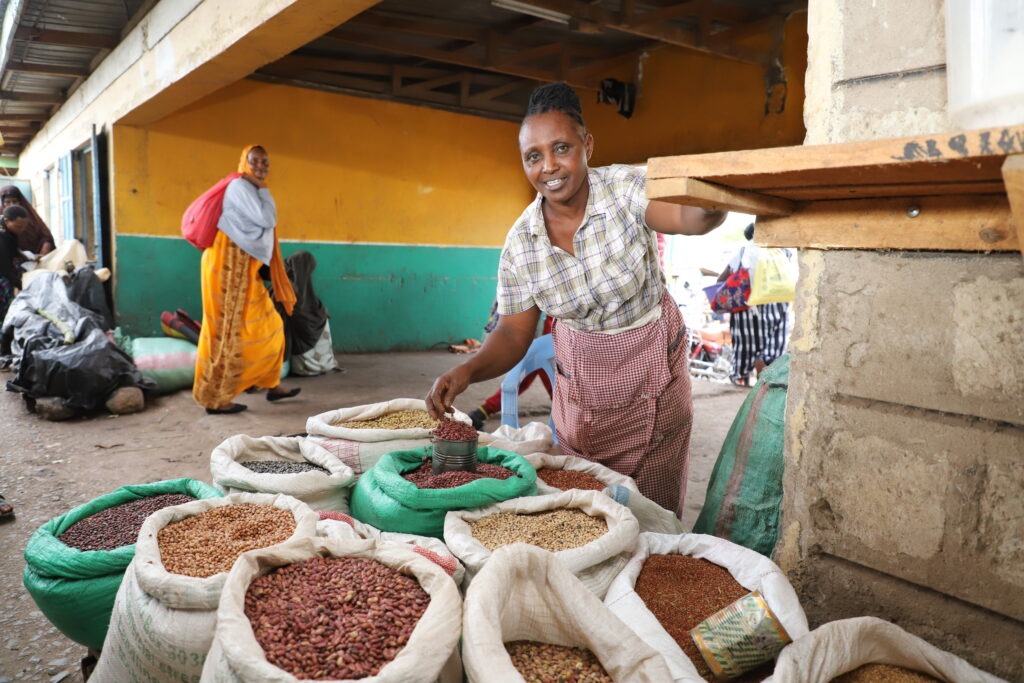
Supporting Farming Families: Fighting Hunger with Stronger Harvests
Our early programs in Kenya strengthened farmer cooperatives in the region, helping farmers boost their productivity of staple crops, like maize. With more grains available and higher incomes, farming families experienced better nutrition and food security. Over time, levels of poverty, hunger, and malnutrition decreased.
Nearly 50 years ago, we began working in Kenya by helping strengthen farmer cooperatives. More recently, from 2010 to 2018, the Kenya Cooperative Development Program, funded by the U.S. Agency for International Development (USAID), trained and coached farmers to grow more maize and manage their businesses better.
From 2002 to 2012, the Kenya Maize Development Program (KMDP) I and II, funded by USAID, helped farmers increase their incomes by nearly 23 percent. We partnered with local organizations, like the Cereal Growers Association of Kenya, to ensure these gains lasted, creating stronger markets and better farming practices.
However, growing more food was not enough; farmers were losing crops to aflatoxin, a toxic mold that grows when crops are stored improperly. From 2014 to 2017, we joined forces with our affiliate, Tanager, the Gates Foundation, and USAID to launch the Storage and Drying for Aflatoxin Prevention (AflaSTOP) Program. Together, we developed the EasyDry M500, a portable drying device that prevents mold and won an award from the All Africa Postharvest Technologies and Innovation Challenge. (Watch a video of how to operate the EasyDry M500 Portable Maize Dryer.)
To get these devices into farmers’ hands, we launched the AgResults Kenya On-Farm Storage Challenge, from 2015 to 2019, which led to the sale of one million storage devices to 200,000 farmers in the Rift Valley and eastern regions.
These efforts transformed Kenya’s agricultural sector by making farming more profitable, improving food security, and strengthening communities through better nutrition and reduced poverty.
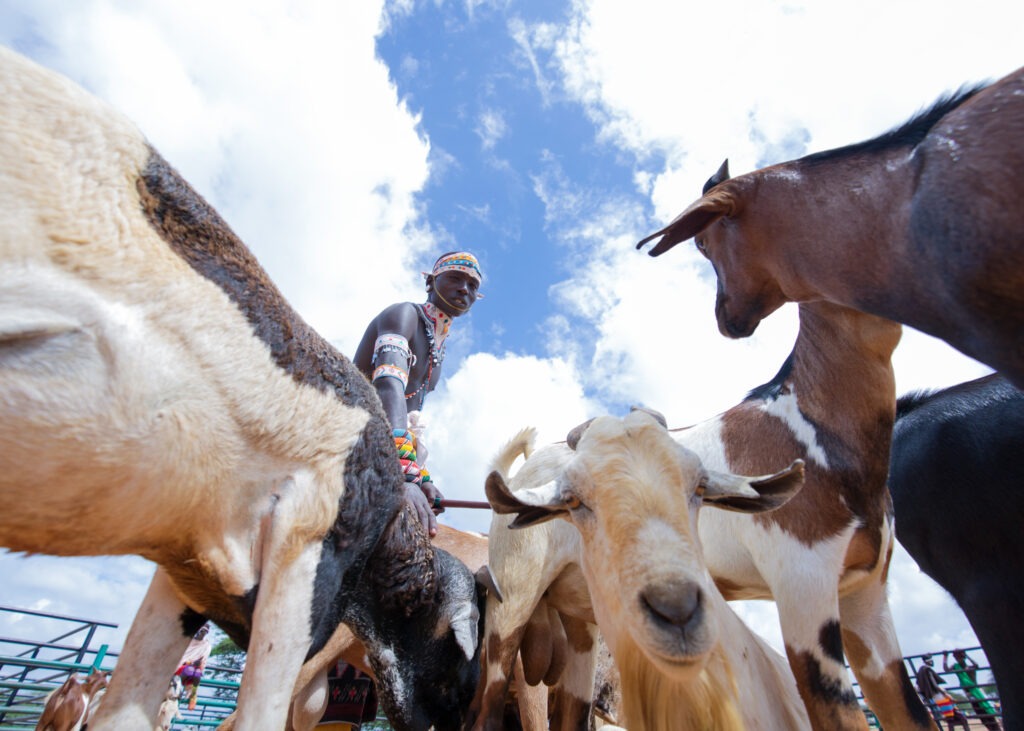
Supporting Pastoralist Families: Strengthening Kenya’s Livestock Sector
In the 2010s, our programs focused on revitalizing Northern Kenya’s livestock sector, an essential lifeline for 80 percent of the region’s population. Because of its remoteness and arid climate, Northern Kenya faces unique challenges. Droughts, floods, and other extreme weather threaten the health of livestock. Our local partners built new livestock markets to provide infrastructure and support to pastoralists, who no longer had to travel long distances to markets.
From 2012 to 2018, the Feed the Future Kenya Resilience and Economic Growth in Arid Lands-Accelerated Growth (REGAL-AG) Activity, funded by USAID, built 20 livestock markets and supported local marketing associations to manage them. These safer, closer markets helped traders sell more products, boosting incomes and improving nutrition. The program provided $2.6 million in grants to 36 local businesses, which used the grants to raise healthier livestock and earn higher trading prices. The result was $15.5 million in incremental sales, 150 new jobs, and a more competitive livestock value chain across Garissa, Isiolo, Marsabit, Turkana, and Wajir counties.
Long-term impact required local partners to take ownership of these efforts. We supported local organizations through the African Institutions Innovation Mechanism-Assist (AIIM-Assist) from 2012 to 2016, helping them innovate, scale up, and secure funding. Groups like the Kenya Livestock Producers Association and East African Farmers Federation gained the tools to lead future growth.
Together, these efforts made livestock trading more profitable, sustainable, and resilient in one of Kenya’s toughest regions.
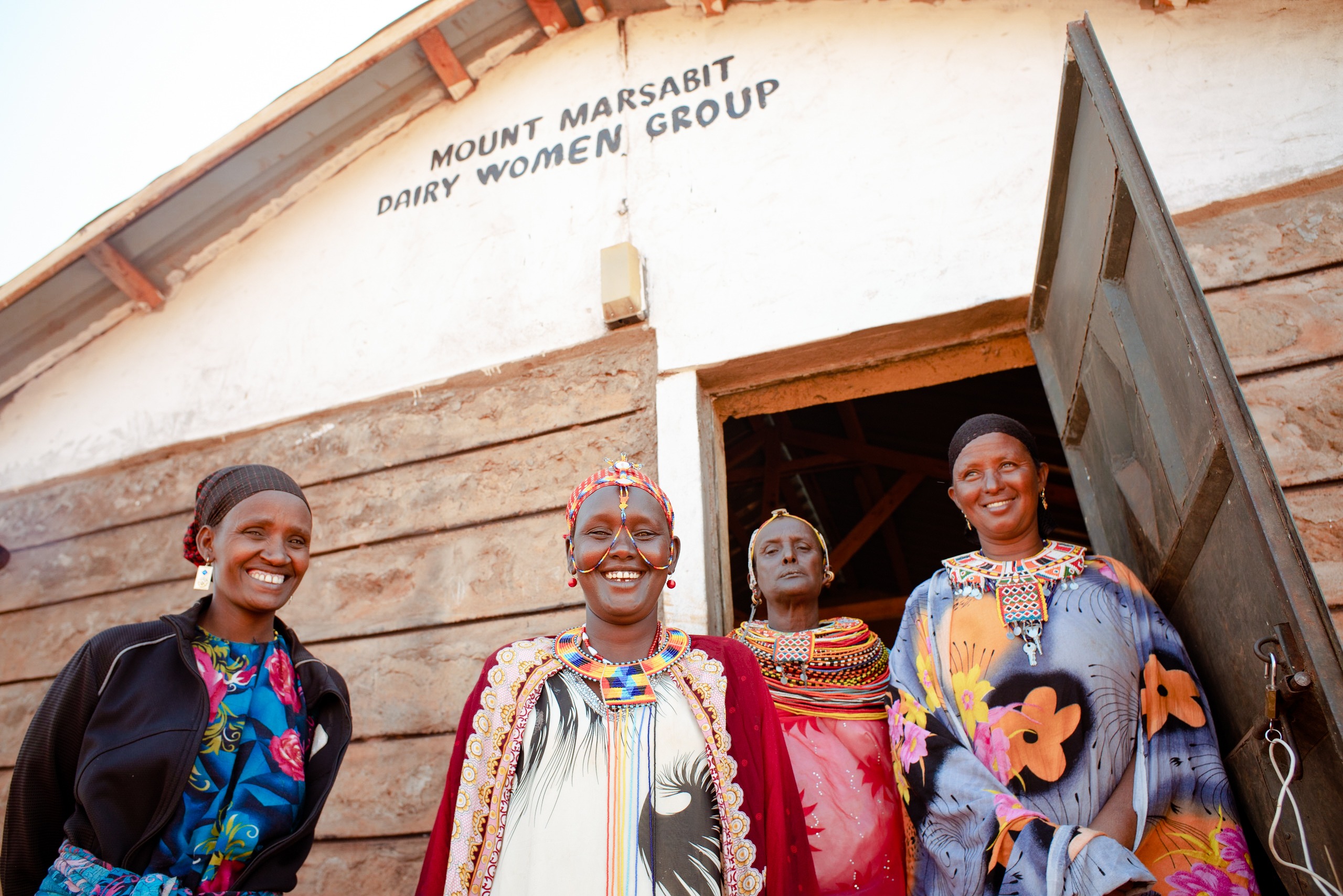
Supporting the Region: Investing in Communities to Build Self-Reliance
As staple crop yields and livestock trade grew, the next step was clear: invest in communities to ensure long-term self-reliance. In the late 2010s and 2020s, our programs expanded access to loans, trained local governments, engaged the private sector, and helped communities adapt to new challenges—from climate shocks to the COVID-19 pandemic.
From 2017 to 2024, the Feed the Future Kenya Livestock Market Systems Activity, funded by USAID, helped 55,000 livestock traders boost their incomes by up to 40 percent. Even amid droughts, the pandemic, and political unrest in Kenya, the program expanded the local job market and helped once-isolated groups join growing value chains. The region transformed into a bustling trade hub. Learn more about the project’s seven years of impact.
In 2019, the Resilience Learning Activity, funded by USAID, began helping families, communities, and systems in Kenya better absorb economic shocks and adapt to stresses. By collaborating across the Horn of Africa, as well as in Northern and Southeastern Kenya, we made data-driven decisions to improve community resilience.
A key innovation was joint work planning, a process that brought together local governments and partners to co-design, co-implement, and co-monitor projects on an annual basis. This approach streamlined efforts, avoided duplication, and made better use of resources. The result? Over 37 billion Kenyan shillings (about $286 million) in joint investments from USAID and Kenyan county governments.
Kenya’s proximity to Somalia brings real threats from extremist groups like Al-Shabaab is real—especially for youth with limited opportunities. To counter this, we helped local leaders focus on economic empowerment.
We also facilitated a Resilience Learning Hub, which includes resources from local partners, local governments, and donors.
Around the same time, the Impact for Northern Kenya (INK) Fund, launched by ACDI/VOCA and our for-profit subsidiary, AV Ventures, disbursed over $10 million in loans to local businesses, reducing the need for future humanitarian aid. The INK Fund is managed through the USAID Kuza Activity, funded by USAID, which boosted private-sector investment in Northern Kenya. It provides capital to financial institutions, which then issue loans to local businesses, ensuring continued investment in the region.
